Intel Desktop Extreme DX58SO2 Motherboard Review
The Intel DX58SO2 Motherboard Layout
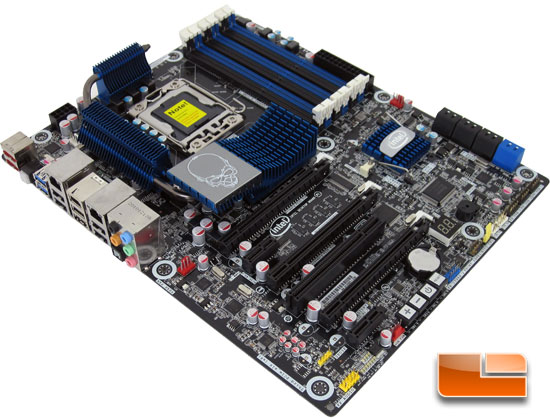
The Intel DX58SO2 X58 motherboard is quite busy looking. Perhaps it’s the contrasting colors, or simply to much text on the board itself. Thankfully, that doesn’t particularly matter! As long as the Intel DX58SO2 works the way it should, they can give it just about any look that they would like to! Though, I’ll be honest, I do dig the skull on the northbridge heatsink assembly! The Intel X58 chipset and PWM’s are passively cooled with a series of heatsinks which are connected with heatpipe technology. The ICH10R chip is also passively cooled though it isn’t connected to the others.
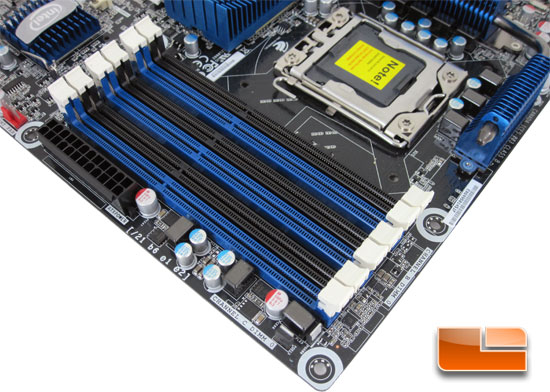
The Intel DX58SO2 will support up to 48Gb of memory in triple channel configuration! That is an impressive amount of memory. The Intel DX58SO2 will support DDR3 memory from 800MHz and up. Speeds over 1600MHz are supported through XMP profiles.
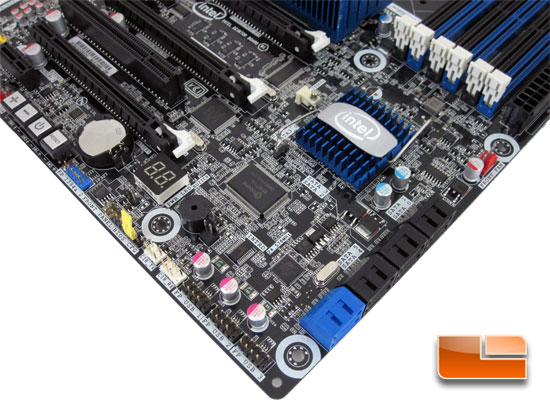
Taking the Intel DX58SO2 for a short spin to look at the next corner, there is quite a bit happening here! The first feature to jump out, probably because it’s the only red item on this corner is the front fan header. There is a total of four fan headers (three system fans and one CPU fan) on the Intel DX58SO2, and all of them are four pin headers. The Intel DX58SO2 has eight SATA ports, six SATA 2 and two SATA 3.0 (6Gbps). The Blue SATA 3 ports are controlled by a Marvell 88SE9128 controller. Rounding the corner and working our way up the left side of the board we have three USB 2.0 headers followed by the Consumer Infrared headers for transmitting and receiving. Beyond the CIR headers we have a yellow jumper for the CMOS reset and the front panel header hiding behind the jumper. The final piece of technology along the edge is the front panel IEEE1394a. At the rear of the PCIe X16 slot is the POST code LED display.
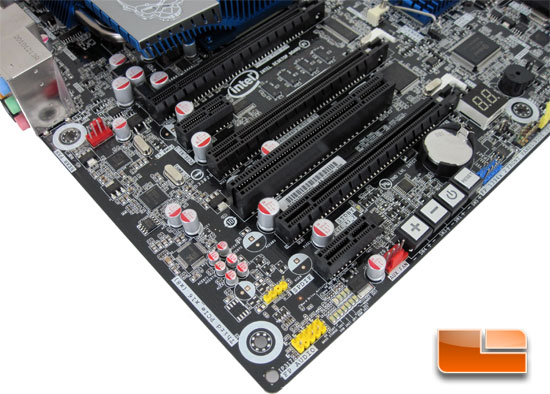
Spinning the board around once more we can get a good look at the layout of the expansion slots. There is a pair of PCIe X1 slots, three PCIe X16 slots and a PCI slot. The PCIe X16 slots are each spaced with enough room for a double slot card. They are laid out in a X16, X16, X8 configuration. If you plan on taking advantage of full bandwidth for a pair of graphics cards they will be stacked one on top of the other, not the best bet for air cooling. Working our way down from where we left off, we have a series of onboard buttons. Going in order we have: reset, power, base clock frequency decrease button, and the base clock frequency increase button. Immediately next to the onboard buttons is the second of the four fan headers on the Intel DX58S02. Moving down we have a number of LED’s. These LED’s are the diagnostic/status LEDs. Just past the LED’s is our yellow front panel audio with the Yellow SPDIF header just above it. Taking a peek at the integrated circuits on the Intel DX58S02 we have a Realtek ALC892 Audio codec to the bottom right of the pair of solid capacitors and the Intel 82567L and Intel 82574L Gigabit Ethernet controllers beyond the capacitors. Our final item along this edge is the third four pin fan header.
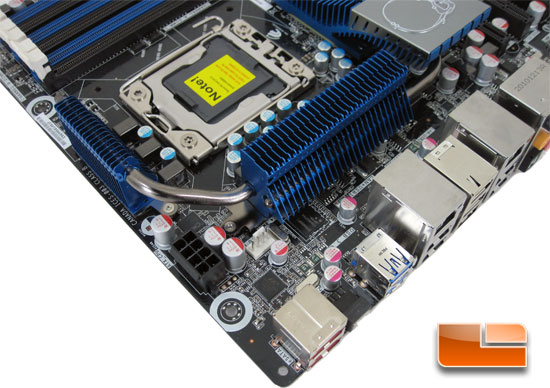
Spinning around one last time, we can get a good look at the last corner of the evening. Here we can see the 8pin CPU power, PWM heatsinks and several more integrated circuits. Immediately next to the motherboard mounting hole is a Marvell 88SE6121, this controls the pair of eSATA parts next to it. Beneath the edge of the heatsink is the Renesas/NEC D720200F1 USB 3.0 host controller chip.

Intel changed up the “traditional” layout on the I/O panel for the Intel DX58SO2. Instead of replacing the PS/2 ports with USB ports for the keyboard and mouse, that spot has been filled with a pair of eSATA ports. The Intel DX58S02 doesn’t have a BIOS reset button on the back panel, instead Intel has equipped the DX58S02 with a Back to BIOS. This allows you to boot into the BIOS using default settings while your overclocked settings are in place and not lost to the wind. We have a pair of USB 3.0 (blue) ports and an additional six USB 2.0 ports. We have a pair of Gigabit Ethernet ports, a single Firewire (IEEE1394a) and five 3.5mm audio jacks plus and optical SPDIF.
Now that our tour of the Intel DX58SO2 X58 motherboard is complete, lets throw some parts into it, and apply a bit of power. First we’ll stick our heads into the BIOS and then we can get into a bit of testing. See you on the next page!

Comments are closed.